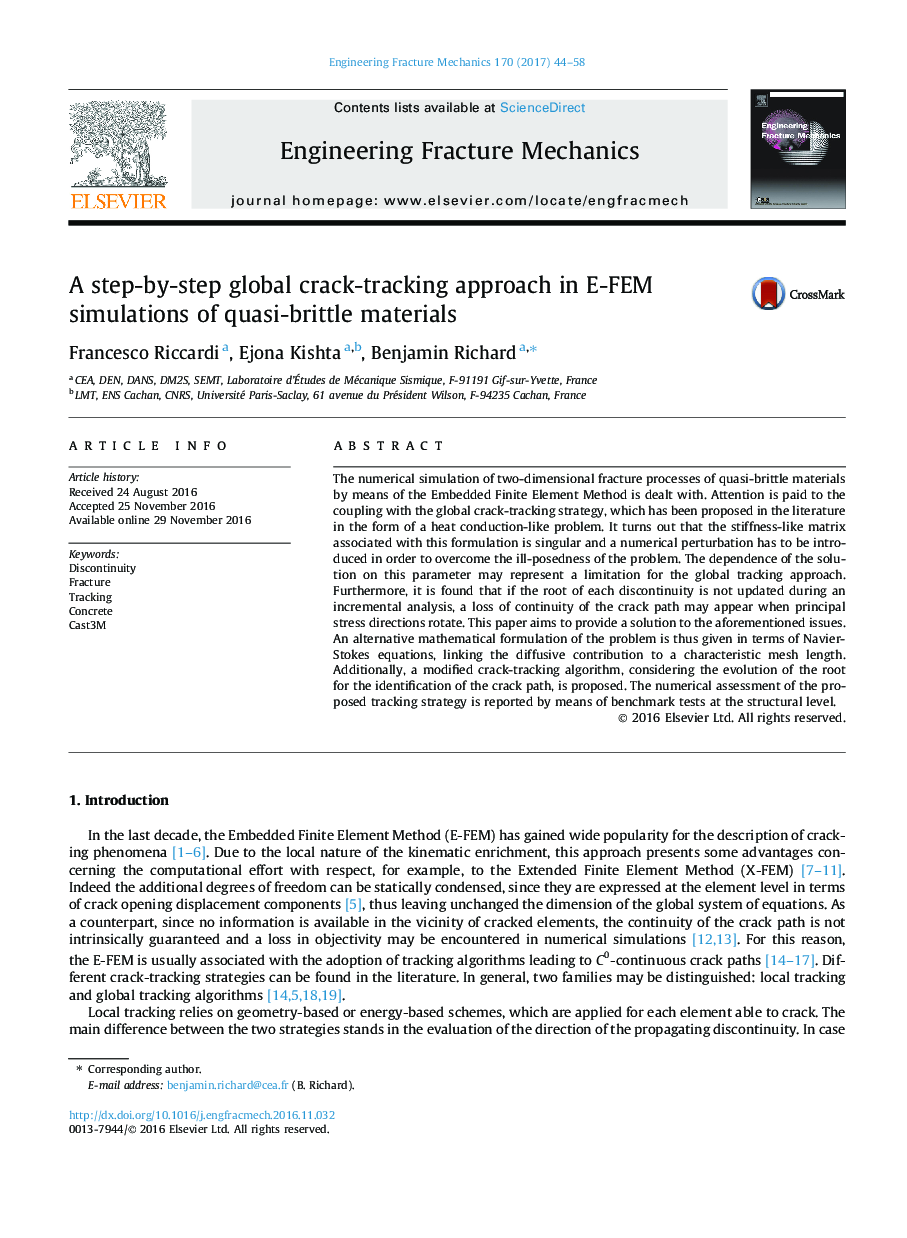| Article ID | Journal | Published Year | Pages | File Type |
|---|---|---|---|---|
| 5014113 | Engineering Fracture Mechanics | 2017 | 15 Pages |
Abstract
The numerical simulation of two-dimensional fracture processes of quasi-brittle materials by means of the Embedded Finite Element Method is dealt with. Attention is paid to the coupling with the global crack-tracking strategy, which has been proposed in the literature in the form of a heat conduction-like problem. It turns out that the stiffness-like matrix associated with this formulation is singular and a numerical perturbation has to be introduced in order to overcome the ill-posedness of the problem. The dependence of the solution on this parameter may represent a limitation for the global tracking approach. Furthermore, it is found that if the root of each discontinuity is not updated during an incremental analysis, a loss of continuity of the crack path may appear when principal stress directions rotate. This paper aims to provide a solution to the aforementioned issues. An alternative mathematical formulation of the problem is thus given in terms of Navier-Stokes equations, linking the diffusive contribution to a characteristic mesh length. Additionally, a modified crack-tracking algorithm, considering the evolution of the root for the identification of the crack path, is proposed. The numerical assessment of the proposed tracking strategy is reported by means of benchmark tests at the structural level.
Related Topics
Physical Sciences and Engineering
Engineering
Mechanical Engineering
Authors
Francesco Riccardi, Ejona Kishta, Benjamin Richard,
